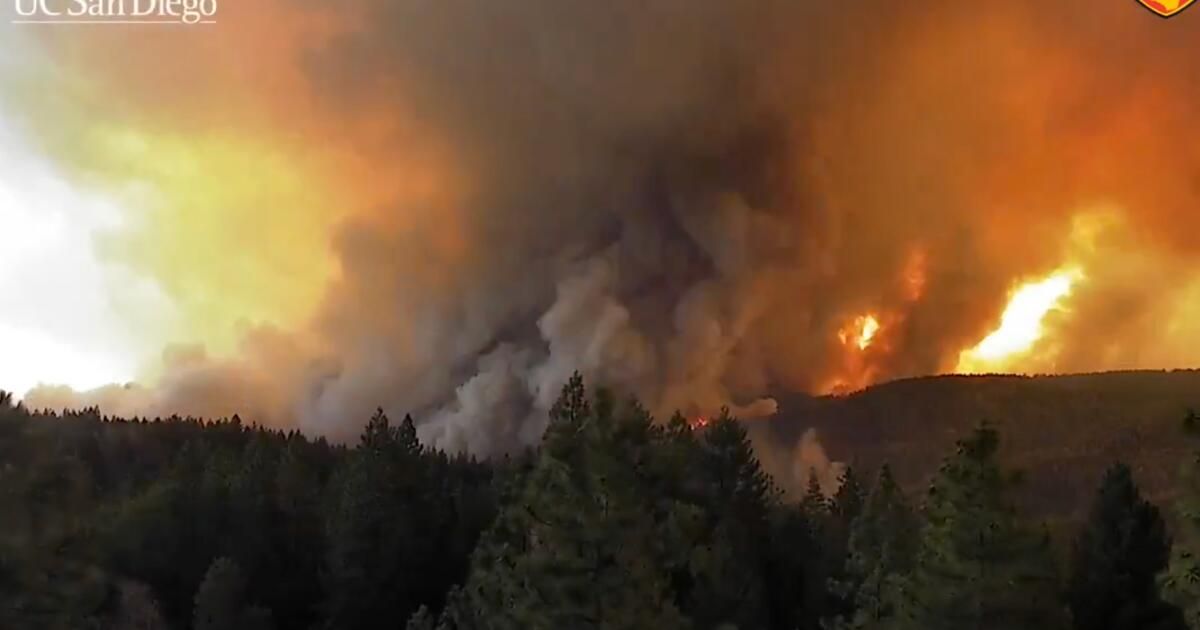As the state’s largest wildfire so far this year doubled in size Thursday night, explosive flames rose into the atmosphere, swirling in a manner that can only be described as tornado-like — a real-life example of the fire tornado phenomenon.
AlertCalifornia wildfire cameras captured video of the massive fire swirl, showing the extreme fire behavior that is driving the massive, fast-moving Park Fire in Butte and Tahoma counties.
The fire had grown to more than 178,000 acres by Friday afternoon, forcing thousands of evacuations and burning more than 100 buildings. Authorities say the fire started Wednesday in Chico due to an act of arson.
“At this point, the fire is creating its own weather, and that can be pretty unpredictable,” said Courtney Carpenter, a meteorologist with the National Weather Service in Sacramento. “Really large, explosive wildfires can create thunderstorms. They can form spinning columns of fire that can mimic tornadoes.”
Forecasters tracked those massive, swirling plumes of smoke on radar Thursday night, Carpenter said, a hallmark of “explosive fire growth.”
He said the wildfire also generated storm clouds but did not trigger lightning, which some particularly unstable fires have created in the past.
Watching the fire produce huge swirls of smoke — and perhaps even several vortices — demonstrated the unusual and powerful nature of the blaze, Daniel Swain, a climate scientist at UCLA, said on his YouTube channel. He said the Park Fire had “characteristics similar to a supercell thunderstorm.”
There is growing recognition that extreme wildfires can produce other dangerous phenomena that are not directly related to the flames, Swain said.
It’s not unusual to see fires modify their environment by driving localized wind currents, but large fires like the Park fire can even begin to “generate their own mesoscale weather systems that look a lot like severe thunderstorms,” he said.
He added that new research is also finding that climate change is increasing the magnitude and frequency of such behavior, as well as pushing it into new regions.
“There is evidence that these large and potentially dangerous pyrocumulonimbus events are increasing in a warming climate as fire intensity increases,” he said.
Carpenter said the weather service does not issue tornado warnings when fire swirls form because residents in the area should have already been evacuated. Evacuation orders have been issued for more than 4,000 people in and around communities northeast of Chico and parts of southern Tehama County.
“We urge people to follow the orders of local authorities,” Carpenter said. “Please be vigilant and prepared to act if you live near the fire.”












